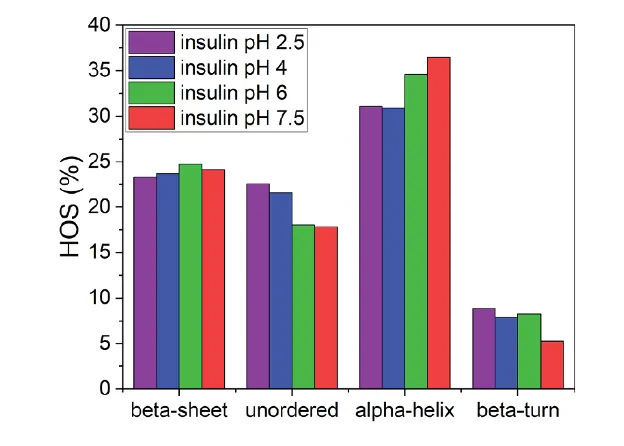
Peptide Therapeutic Characterization and Structural Analysis with MMS
Why Peptide Analysis Is Essential for Therapeutic Development
Peptide therapeutics account for 5% of the global pharmaceutical market and will continue to expand over the coming years. The increase in investment and research efforts in the peptide field, the maturity of peptide synthesis technology, and the success of biologics collectively contribute to the fast-growing market of peptide therapeutics.
Peptide Structure and Stability Challenges
Peptides are composed of the same building blocks–amino acids–as proteins and naturally form secondary structures such as alpha-helix and beta-sheets. The fundamental difference between proteins and peptides is the length of the amino acid chain. Although there is no specific cut-off number of amino acids for defining a peptide or a protein, it is traditionally considered that peptides consist of 2-50 amino acids. Depending on the size, most peptides do not form tertiary or quaternary structures like proteins do which further stabilize their integrity. As a result, chemical and physical stability becomes the main challenge for peptides to be directly used as therapeutics. Chemical modifications such as PEGylation and disulfide mimetics are often implemented in peptide therapeutics development to increase metabolic stability and bioavailability. It is therefore critical to ensure that the peptide maintains the secondary structure–the sole higher order structural determinant of its biological function and efficacy, during the development and formulation processes.
How MMS Enhances Peptide Structural Characterization
The novel Aurora TX utilizes a quantum cascade laser (QCL) and a microfluidic flow cell to provide secondary structural characterization of peptide therapeutics via Microfluidic Modulation Spectroscopy (MMS). The improved sensitivity provided by the QCL and the real-time buffer subtraction powered by the MMS technology enable the detection of the smallest changes in peptide secondary structures caused by possible change in the chemical environment.
Case Study: pH Impact on Insulin Structure
This application was demonstrated by a collaborative study using the first-generation MMS instrument, the AQS³pro, to determine the structural effect of pH on insulin, a 51 amino acid peptide hormone. pH is one of the key factors that dictates the activity of insulin: it is either stored as a hexamer (inactive) in pancreas at acidic pH or released as a monomer (active) at physiological pH. In this investigation, the Higher Order Structure (HOS) of insulin was analyzed on the AQS³pro as a titrated series prepared at four pH values of 2.5, 4, 6, and 7.5. Shown in Figure 1, as the pH increases from pH 2.5 to pH 7.5, the alpha helical content increases and the unordered structures decrease. This transition from unordered to greater alpha helical content is associated with a transition from the inactive to the active form of the peptide hormone.

Related Resources

